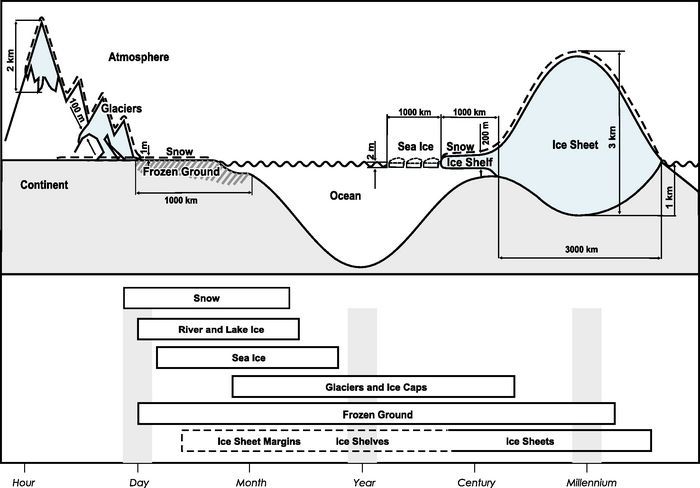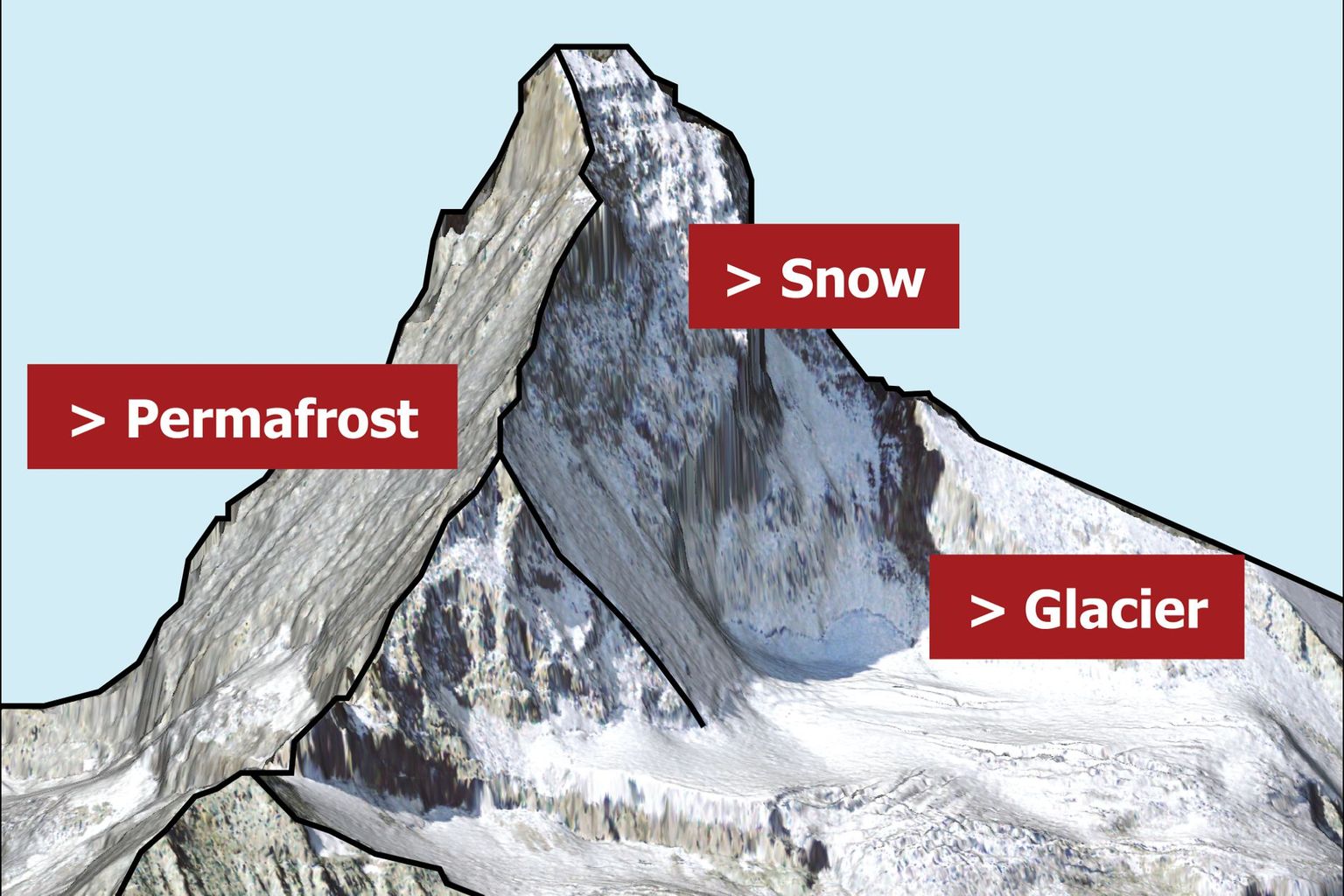Cryosphere
Cryosphere denotes all landscapes on Earth in which water occurs in form of ice or snow. This comprises sea ice, snow, glacier ice and permafrost.
The CC’s exploration and observation of the cryosphere covers mainly the regions with snow, ice and permafrost in the Swiss Alps. The geo-physical, climatic and ecological functions of the cryosphere is observed as well as the role in the hydrological balance and its reaction towards climate change of all scales from seasonal to long-term. The variables of the alpine cryosphere are sensitive indicators of the climatic change. The changes of glaciers are easily perceptible factors in nature even for laypeople. Likewise it is permafrost that reacts very delicately to temperature changes. The melting of frozen ground in high mountain ranges causes instabilities which then again have an impact on mountain railways, hiking trails, streets and mountain villages. The snow coverage not only plays an important role as a climatic and environmental factor which has crucial influence on glaciers and permafrost. At the same time the snow coverage is a vital aspect for several economic and industrial sectors. In Switzerland there have been ongoing measurements of snow and glaciers since the end of the 19th century. The resulting long measurement series allow statements on the effects of climate change on alpine regions.


